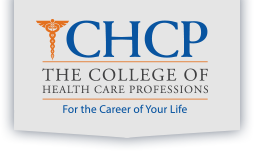When you picture today's most influential medical workers, you probably think of physicians and nurses. The healthcare industry is far more diverse, however, and includes many specialized employees who perform targeted procedures.
Such is the case for cardiovascular sonographers. These essential health care specialists play a key role in preventing and diagnosing patients with various problematic heart and vascular conditions.
Cardiovascular sonographers use advanced ultrasound equipment to obtain high quality images of patients' hearts and vessels throughout the body. These images are then analyzed by cardiologists and other specialists. Cardiac ultrasound images, also called an echocardiogram, and other vascular exams help physicians determine which treatment is best suited for the patient.
It is difficult to understand this niche before entering the field, so we have highlighted a few of the key considerations to keep in mind as you consider this opportunity to make a difference for patients and their loved ones.
What Are the Job Responsibilities of a Cardiovascular Sonographer?
While cardiovascular sonographers fulfill a variety of duties during a typical workday, their most important function involves performing echocardiograms and other vascular exams. These targeted sonograms can be thought of as ultrasounds of the heart and vessels. In fact, cardiovascular sonographers use the same equipment commonly used to examine fetuses through the various stages of pregnancy.
Echocardiograms and other vascular exams call on the power of sound waves to produce live images. Echocardiograms are able to demonstrate whether the heart muscle and valves are functioning properly. Depending on the context of the test and the types of equipment available, patients may receive 2D or 3D images. These are used to diagnose heart conditions and monitor progress after surgery or other treatments.
Cardiovascular sonographers may be required to take on the following duties:
-
Operate and maintain diagnostic equipment
-
Prepare patients for procedures by answering questions and explaining the basics of echocardiograms and other vascular exams
-
Review images produced during exams to verify all needed information was obtained
-
Evaluate diagnostic details while creating reports for physicians
Where Do Cardiovascular Sonographers Work?
Cardiovascular sonographers can work in a variety of medical settings. Some may find themselves in a cardiology or vascular specialist office where they assist in providing routine or follow-up care. In these environments, most sonographers are able to work standard 9-to-5 workdays.
Sonographers who work in hospitals may take on shift work, staying on the job for a full 12 hours, and often rotating weekends or holidays with other employees. In these facilities, some sonographers report to surgical team members as they provide insight into urgent heart conditions. Findings from the images that they produce can save patients' lives. Work within a hospital setting can be challenging, but sonographers also describe a sense of professional satisfaction.
Increasingly, cardiovascular sonographers assist in corporate settings. They help manufacturers determine where they can make key adjustments to improve imaging equipment and play an important role in training. For example, Philips sometimes hires cardiovascular sonographers as clinical specialists to provide support for ultrasound equipment through direct physician interaction, medical staff education, and procedural consultation.
What Are the Educational Requirements for Cardiovascular Sonographers?
A strong academic background is crucial to success for cardiovascular sonographers. At minimum, most employers require an Associate of Applied Science in Cardiovascular Sonography. This degree is designed to help provide a detailed understanding of the basic anatomy, physiology, and pathology of cardiovascular systems.
Upon obtaining an AAS degree, graduates should be able to demonstrate in-depth knowledge of:
-
Ultrasound principles
-
Sonography image orientation
-
Medical terminology
-
Techniques for preventing musculoskeletal injuries
-
Cardiac disease and treatments
-
Vascular disease and treatments
Employers prefer that students possess not only a theoretical understanding of these concepts, but also hands-on experience. Ideally, graduates will be acclimated to the clinical environment after completing a series of practicum placements. This applied style of learning is a key aspect of the Cardiovascular Sonography Associate Degree Program at CHCP in Texas.
In addition to an AAS degree, most health care employers require cardiovascular sonographer applicants to demonstrate that they have successfully passed required industry exams. These include the Adult Echocardiography Registry Exam and the Vascular Registry Exam. The ideal academic program will include thorough preparation for these tests. Upon passing necessary exams and graduating with their AAS, students should be ready to enter the field.
What Can Aspiring Cardiovascular Sonographers Expect for Job Outlook and Pay?
As members of the Baby Boomer generation age and become more prone to heart problems, the demand for skilled cardiovascular sonographers is rising. The U.S. Bureau of Labor Statistics (BLS) groups these professionals with diagnostic medical sonographers and vascular technologists; together, they enjoy a promising job outlook of 10%.
With so many exciting and meaningful opportunities available in the field of cardiovascular sonography, now is an excellent time to obtain high-quality training. The Cardiovascular Sonography Program at The College of Health Care Professions could equip you with the critical skills and knowledge needed to succeed in this health care niche. For more information, simply fill out our form and one of our admissions advisors will contact you to answer any questions you may have.



